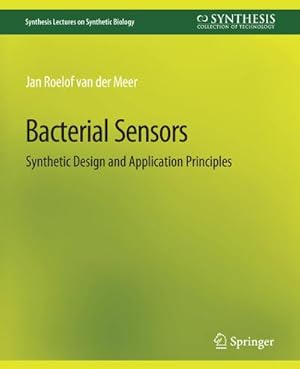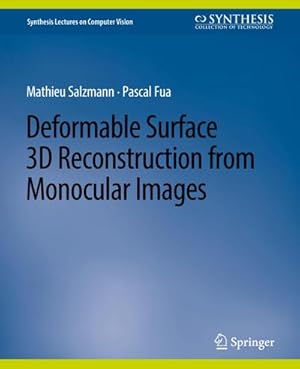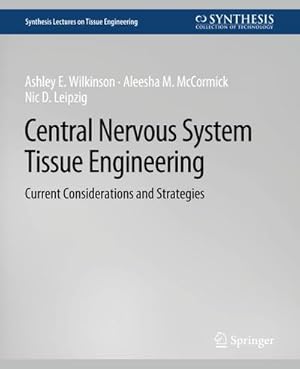springer international publishing dez 2010 (8 results)
Product Type
- All Product Types
- Books (8)
- Magazines & Periodicals
- Comics
- Sheet Music
- Art, Prints & Posters
- Photographs
- Maps
- Manuscripts & Paper Collectibles
Condition
- All Conditions
- New (8)
- Used
Binding
- All Bindings
- Hardcover
- Softcover (8)
Collectible Attributes
- First Edition
- Signed
- Dust Jacket
- Seller-Supplied Images (8)
- Not Print on Demand
Free Shipping
- Free US Shipping
Seller Location
Seller Rating
-
Search-Based Applications
Published by Springer International Publishing Dez 2010, 2010
ISBN 10: 3031011465ISBN 13: 9783031011467
Seller: BuchWeltWeit Ludwig Meier e.K., Bergisch Gladbach, Germany
Book Print on Demand
Taschenbuch. Condition: Neu. This item is printed on demand - it takes 3-4 days longer - Neuware -We are poised at a major turning point in the history of information management via computers. Recent evolutions in computing, communications, and commerce are fundamentally reshaping the ways in which we humans interact with information, and generating enormous volumes of electronic data along the way. As a result of these forces, what will data management technologies, and their supporting software and system architectures, look like in ten years It is difficult to say, but we can see the future taking shape now in a new generation of information access platforms that combine strategies and structures of two familiar -- and previously quite distinct -- technologies, search engines and databases, and in a new model for software applications, the Search-Based Application (SBA), which offers a pragmatic way to solve both well-known and emerging information management challenges as of now. Search engines are the world's most familiar and widely deployed information access tool, used by hundreds of millions of people every day to locate information on the Web, but few are aware they can now also be used to provide precise, multidimensional information access and analysis that is hard to distinguish from current database applications, yet endowed with the usability and massive scalability of Web search. In this book, we hope to introduce Search Based Applications to a wider audience, using real case studies to show how this flexible technology can be used to intelligently aggregate large volumes of unstructured data (like Web pages) and structured data (like database content), and to make that data available in a highly contextual, quasi real-time manner to a wide base of users for a varied range of purposes. We also hope to shed light on the general convergences underway in search and database disciplines, convergences that make SBAs possible, and which serve as harbingers of information management paradigms and technologies to come. Table of Contents: Search Based Applications / Evolving Business Information Access Needs / Origins and Histories / Data Models and Storage / Data Collection/Population / Data Processing / Data Retrieval / Data Security, Usability, Performance, Cost / Summary Evolutions and Convergences / SBA Platforms / SBA Uses and Preconditions / Anatomy of a Search Based Application / Case Study: GEFCO / Case Study: Urbanizer / Case Study: National Postal Agency / Future Directions 188 pp. Englisch.
-
Bacterial Sensors
Published by Springer International Publishing Dez 2010, 2010
ISBN 10: 3031014421ISBN 13: 9783031014420
Seller: BuchWeltWeit Ludwig Meier e.K., Bergisch Gladbach, Germany
Book Print on Demand
Taschenbuch. Condition: Neu. This item is printed on demand - it takes 3-4 days longer - Neuware -Bacterial reporters are live, genetically engineered cells with promising application in bioanalytics. They contain genetic circuitry to produce a cellular sensing element, which detects the target compound and relays the detection to specific synthesis of so-called reporter proteins (the presence or activity of which is easy to quantify). Bioassays with bacterial reporters are a useful complement to chemical analytics because they measure biological responses rather than total chemical concentrations. Simple bacterial reporter assays may also replace more costly chemical methods as a first line sample analysis technique. Recent promising developments integrate bacterial reporter cells with microsystems to produce bacterial biosensors.This lecture presents an in-depth treatment of the synthetic biological design principles of bacterial reporters, the engineering of which started as simple recombinant DNA puzzles, but has now become a more rational approach of choosing and combining sensing, controlling and reporting DNA 'parts'. Several examples of existing bacterial reporter designs and their genetic circuitry will be illustrated. Besides the design principles, the lecture also focuses on the application principles of bacterial reporter assays. A variety of assay formats will be illustrated, and principles of quantification will be dealt with. In addition to this discussion, substantial reference material is supplied in various Annexes.Table of Contents: Short History of the use of Bacteria for Biosensing and Bioreporting / Genetic Engineering Concepts / Measuring with Bioreporters / Epilogue 168 pp. Englisch.
-
Deformable Surface 3D Reconstruction from Monocular Images
Published by Springer International Publishing Dez 2010, 2010
ISBN 10: 3031006828ISBN 13: 9783031006821
Seller: BuchWeltWeit Ludwig Meier e.K., Bergisch Gladbach, Germany
Book Print on Demand
Taschenbuch. Condition: Neu. This item is printed on demand - it takes 3-4 days longer - Neuware -Being able to recover the shape of 3D deformable surfaces from a single video stream would make it possible to field reconstruction systems that run on widely available hardware without requiring specialized devices. However, because many different 3D shapes can have virtually the same projection, such monocular shape recovery is inherently ambiguous. In this survey, we will review the two main classes of techniques that have proved most effective so far: The template-based methods that rely on establishing correspondences with a reference image in which the shape is already known, and non-rigid structure-from-motion techniques that exploit points tracked across the sequences to reconstruct a completely unknown shape. In both cases, we will formalize the approach, discuss its inherent ambiguities, and present the practical solutions that have been proposed to resolve them. To conclude, we will suggest directions for future research. Table of Contents: Introduction / Early Approaches to Non-Rigid Reconstruction / Formalizing Template-Based Reconstruction / Performing Template-Based Reconstruction / Formalizing Non-Rigid Structure from Motion / Performing Non-Rigid Structure from Motion / Future Directions 116 pp. Englisch.
-
Fundamentals of Object Databases
Published by Springer International Publishing Dez 2010, 2010
ISBN 10: 3031007166ISBN 13: 9783031007163
Seller: BuchWeltWeit Ludwig Meier e.K., Bergisch Gladbach, Germany
Book Print on Demand
Taschenbuch. Condition: Neu. This item is printed on demand - it takes 3-4 days longer - Neuware -Object-oriented databases were originally developed as an alternative to relational database technology for the representation, storage, and access of non-traditional data forms that were increasingly found in advanced applications of database technology. After much debate regarding object-oriented versus relational database technology, object-oriented extensions were eventually incorporated into relational technology to create object-relational databases. Both object-oriented databases and object-relational databases, collectively known as object databases, provide inherent support for object features, such as object identity, classes, inheritance hierarchies, and associations between classes using object references. This monograph presents the fundamentals of object databases, with a specific focus on conceptual modeling of object database designs. After an introduction to the fundamental concepts of object-oriented data, the monograph provides a review of object-oriented conceptual modeling techniques using side-by-side Enhanced Entity Relationship diagrams and Unified Modeling Language conceptual class diagrams that feature class hierarchies with specialization constraints and object associations. These object-oriented conceptual models provide the basis for introducing case studies that illustrate the use of object features within the design of object-oriented and object-relational databases. For the object-oriented database perspective, the Object Data Management Group data definition language provides a portable, language-independent specification of an object schema, together with an SQL-like object query language. LINQ (Language INtegrated Query) is presented as a case study of an object query language together with its use in the db4o open-source object-oriented database. For the object-relational perspective, the object-relational features of the SQL standard are presented together with an accompanying case study of the object-relational features of Oracle. For completeness of coverage, an appendix provides a mapping of object-oriented conceptual designs to the relational model and its associated constraints. Table of Contents: List of Figures / List of Tables / Introduction to Object Databases / Object-Oriented Databases / Object-Relational Databases 176 pp. Englisch.
-
Ethics for Bioengineers
Published by Springer International Publishing Dez 2010, 2010
ISBN 10: 303100518XISBN 13: 9783031005183
Seller: BuchWeltWeit Ludwig Meier e.K., Bergisch Gladbach, Germany
Book Print on Demand
Taschenbuch. Condition: Neu. This item is printed on demand - it takes 3-4 days longer - Neuware -Increasingly, biomedical scientists and engineers are involved in projects, design, or research and development that involve humans or animals. The book presents general concepts on professionalism and the regulation of the profession of engineering, including a discussion on what is ethics and moral conduct, ethical theories and the codes of ethics that are most relevant for engineers. An ethical decision-making process is suggested. Other issues such as conflicts of interest, plagiarism, intellectual property, confidentiality, privacy, fraud, and corruption are presented. General guidelines, the process for obtaining ethics approval from Ethics Review Boards, and the importance of obtaining informed consent from volunteers recruited for studies are presented. A discussion on research with animals is included. Ethical dilemmas focus on reproductive technologies, stem cells, cloning, genetic testing, and designer babies. The book includes a discussion on ethics and the technologies of body enhancement and of regeneration. The importance of assessing the impact of technology on people, society, and on our planet is stressed. Particular attention is given to nanotechnologies, the environment, and issues that pertain to developing countries. Ideas on gender, culture, and ethics focus on how research and access to medical services have, at times, been discriminatory towards women. The cultural aspects focus on organ transplantation in Japan, and a case study of an Aboriginal child in Canada; both examples show the impact that culture can have on how care is provided or accepted. The final section of the book discusses data collection and analysis and offers a guideline for honest reporting of results, avoiding fraud, or unethical approaches. The appendix presents a few case studies where fraud and/or unethical research have occurred. Table of Contents: Introduction to Ethics / Experiments with Human Subjects or Animals / Examples of Ethical Dilemmas in Biomedical Research / Technology and Society / Gender, Culture, and Ethics / Data Collection and Analysis 84 pp. Englisch.
-
Central Nervous System Tissue Engineering
Published by Springer International Publishing Dez 2010, 2010
ISBN 10: 3031014545ISBN 13: 9783031014543
Seller: BuchWeltWeit Ludwig Meier e.K., Bergisch Gladbach, Germany
Book Print on Demand
Taschenbuch. Condition: Neu. This item is printed on demand - it takes 3-4 days longer - Neuware -Combating neural degeneration from injury or disease is extremely difficult in the brain and spinal cord, i.e. central nervous system (CNS). Unlike the peripheral nerves, CNS neurons are bombarded by physical and chemical restrictions that prevent proper healing and restoration of function. The CNS is vital to bodily function, and loss of any part of it can severely and permanently alter a person's quality of life. Tissue engineering could offer much needed solutions to regenerate or replace damaged CNS tissue. This review will discuss current CNS tissue engineering approaches integrating scaffolds, cells and stimulation techniques. Hydrogels are commonly used CNS tissue engineering scaffolds to stimulate and enhance regeneration, but fiber meshes and other porous structures show specific utility depending on application. CNS relevant cell sources have focused on implantation of exogenous cells or stimulation of endogenous populations. Somatic cells of the CNS are rarely utilized for tissue engineering; however, glial cells of the peripheral nervous system (PNS) may be used to myelinate and protect spinal cord damage. Pluripotent and multipotent stem cells offer alternative cell sources due to continuing advancements in identification and differentiation of these cells. Finally, physical, chemical, and electrical guidance cues are extremely important to neural cells, serving important roles in development and adulthood. These guidance cues are being integrated into tissue engineering approaches. Of particular interest is the inclusion of cues to guide stem cells to differentiate into CNS cell types, as well to guide neuron targeting. This review should provide the reader with a broad understanding of CNS tissue engineering challenges and tactics, with the goal of fostering the future development of biologically inspired designs.Table of Contents: Introduction / Anatomy of the CNS and Progression of Neurological Damage / Biomaterials for Scaffold Preparation / Cell Sources for CNS TE / Stimulation and Guidance / Concluding Remarks 124 pp. Englisch.
-
Processor Microarchitecture
Published by Springer International Publishing Dez 2010, 2010
ISBN 10: 3031006011ISBN 13: 9783031006012
Seller: BuchWeltWeit Ludwig Meier e.K., Bergisch Gladbach, Germany
Book Print on Demand
Taschenbuch. Condition: Neu. This item is printed on demand - it takes 3-4 days longer - Neuware -This lecture presents a study of the microarchitecture of contemporary microprocessors. The focus is on implementation aspects, with discussions on their implications in terms of performance, power, and cost of state-of-the-art designs. The lecture starts with an overview of the different types of microprocessors and a review of the microarchitecture of cache memories. Then, it describes the implementation of the fetch unit, where special emphasis is made on the required support for branch prediction. The next section is devoted to instruction decode with special focus on the particular support to decoding x86 instructions. The next chapter presents the allocation stage and pays special attention to the implementation of register renaming. Afterward, the issue stage is studied. Here, the logic to implement out-of-order issue for both memory and non-memory instructions is thoroughly described. The following chapter focuses on the instruction execution and describes the different functional units that can be found in contemporary microprocessors, as well as the implementation of the bypass network, which has an important impact on the performance. Finally, the lecture concludes with the commit stage, where it describes how the architectural state is updated and recovered in case of exceptions or misspeculations. This lecture is intended for an advanced course on computer architecture, suitable for graduate students or senior undergrads who want to specialize in the area of computer architecture. It is also intended for practitioners in the industry in the area of microprocessor design. The book assumes that the reader is familiar with the main concepts regarding pipelining, out-of-order execution, cache memories, and virtual memory. Table of Contents: Introduction / Caches / The Instruction Fetch Unit / Decode / Allocation / The Issue Stage / Execute / The Commit Stage / References / Author Biographies 120 pp. Englisch.
-
Analysis of Oriented Texture with application to the Detection of Architectural Distortion in Mammograms
Published by Springer International Publishing Dez 2010, 2010
ISBN 10: 3031005198ISBN 13: 9783031005190
Seller: BuchWeltWeit Ludwig Meier e.K., Bergisch Gladbach, Germany
Book Print on Demand
Taschenbuch. Condition: Neu. This item is printed on demand - it takes 3-4 days longer - Neuware -The presence of oriented features in images often conveys important information about the scene or the objects contained; the analysis of oriented patterns is an important task in the general framework of image understanding. As in many other applications of computer vision, the general framework for the understanding of oriented features in images can be divided into low- and high-level analysis. In the context of the study of oriented features, low-level analysis includes the detection of oriented features in images; a measure of the local magnitude and orientation of oriented features over the entire region of analysis in the image is called the orientation field. High-level analysis relates to the discovery of patterns in the orientation field, usually by associating the structure perceived in the orientation field with a geometrical model. This book presents an analysis of several important methods for the detection of oriented features in images, and a discussion of the phase portrait method for high-level analysis of orientation fields. In order to illustrate the concepts developed throughout the book, an application is presented of the phase portrait method to computer-aided detection of architectural distortion in mammograms. Table of Contents: Detection of Oriented Features in Images / Analysis of Oriented Patterns Using Phase Portraits / Optimization Techniques / Detection of Sites of Architectural Distortion in Mammograms 168 pp. Englisch.









